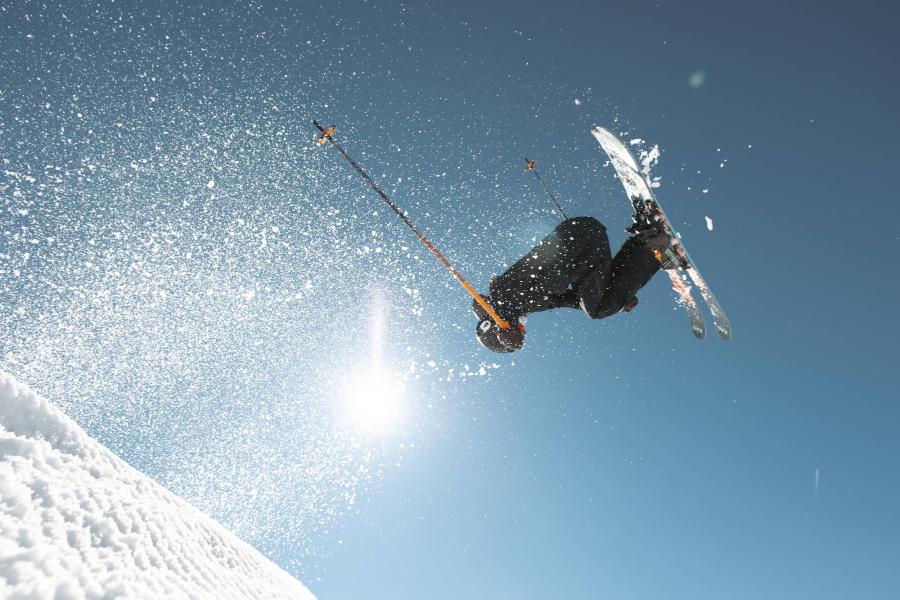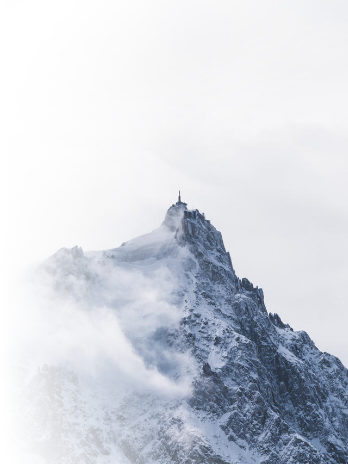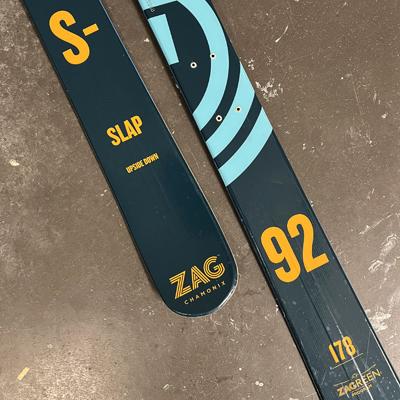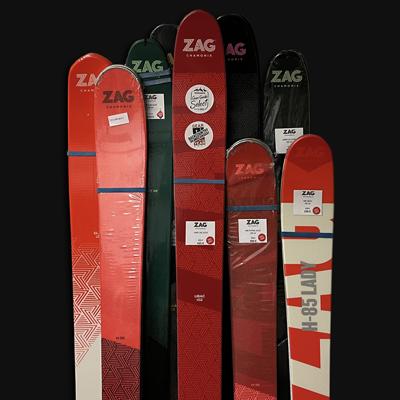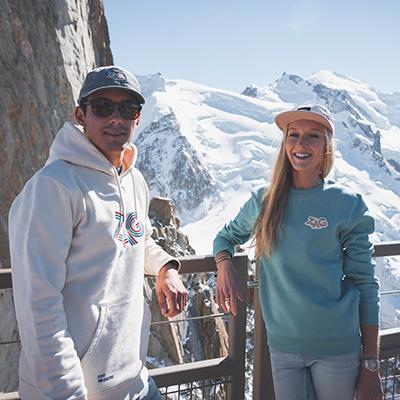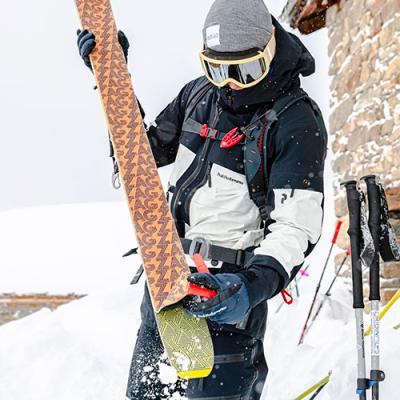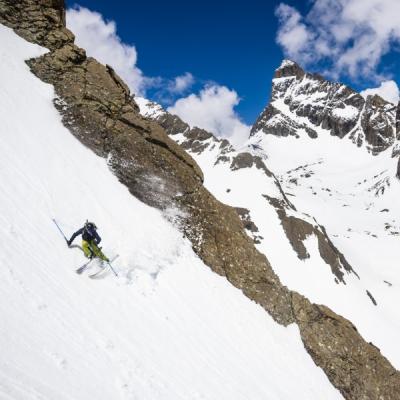Tutorial: Preventing risk
On the lookout for the ideal conditions to go out there in fresh powder with some friends is the holy grail for all skiers! However, as you may know these activities represent many dangers. Therefore, in this article we’re gonna try to help you prepare for these risks and adapt in case of a glitch.
Perfect conditions, ready to shred at dawn with your ski buddies…But hold on a minute!
It is important not to overlook the team’s state of mind. Being aware of the motivations of each will permit to adapt the session to suit as many people as possible. Indeed, you are never safe from someone getting tired or someone who wans to climb as much as possible in a minimum time, so it is mandatory to know in advance in order to avoid any frustration in the team.
AVD CHECK OK! BUT BEWARE OF INTERFERENCES!
If you want your transceiver to work properly, it’s essential to eliminate as much interference as possible. Interferences can be triggered by any electronic device (even turned off or on airplane mode for smartphones). The closer to the AVD, the more it interferes with the frequencies of the device. You need to keep your electronic device/metallics at a minimum of 50 cm from the AVD or better still turn them off.
Now, time to go, the starting gun has been fired, we distinguish quickly those who are in good shape and those just walking around and chatting. No need to remind you that when you do some sport, most of the time you sweat and feel hot. So, having a good management of your clothing layers is primary. After a quarter of an hour of effort, do not hesitate to have a break, reuniting the group and ask how everyone’s feeling. If you need you can take a layer off if you’re too hot and you can create some small groups and take up the slack.
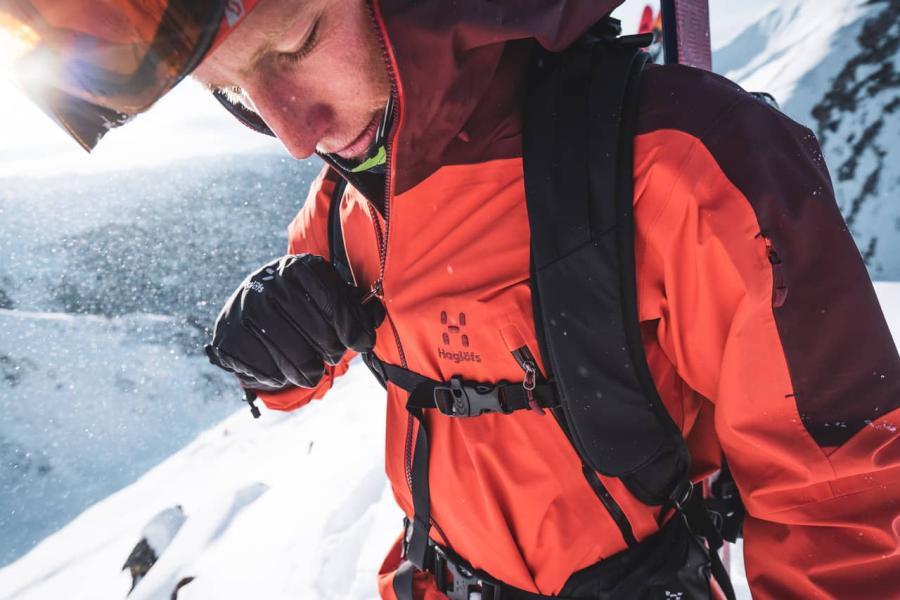
PIERRO’S WORDS
“The consideration of human factors and the terrain are primordial for the smooth running of the trip, if you don’t feel it, do not hesitate to say it. Communication is an element not to be neglected either in a group during your session. Often, accidents happen when the weakest don’t want to say that they are not at their best or when they don’t feel it and on the contrary someone over motivated can lead you into critical situations without taking the time to analyze the terrain and environment.”
“ALWAYS double check to see if all transceivers are working. It’s possible that the frequencies of some AVD are not anymore compatible with the other devices.
In General, I put my transceiver in a safe pocket of my pants (with a leash inside) and my phone in the opposite pocket in my jacket or even at the top of my backpack. Careful, not only electronic devices can interfere with the frequencies, foil packaging around cereal bars can also default your transceiver! “
DECISION SUPPORT, MUNTER 3X3
This simple method exists to help you make quick decisions.
It’s based on 3 factors, the human, the conditions and the terrain through 3 spatiotemporal levels: before, parking, terrain.
BEFORE: Consult the avalanche risk bulletin, get informed on the itinerary.
PARKING: Personal weather. Do a quick brief with the team, their state of mind, motivations and their expectations for the trip.
TERRAIN: Be able to constantly analyze the terrain and environment and be able to review your route if it turns out that the conditions were not as expected.
For more infos you can consult this link :
It is important to know the snow cover of the slopes, who went there recently (forums), the upcoming weather conditions, the start point, the route to follow...
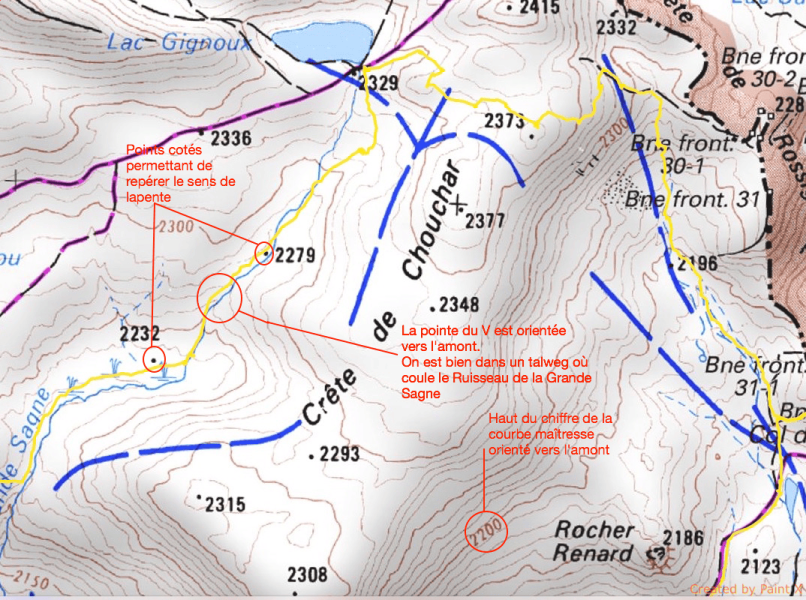
PIERRO’S WORDS
“The 3X3 Munter is one of the methods that I often use to analyze the risk when I go ski touring, alone or with my clients. It’s important to be able to ask yourself the right question at the right time!
But what remains the most difficult to analyze and interpret is nivology! If you want to improve your skills and test your knowledge, do not hesitate to ask some tips from a mountain professional.”
A LITTLE BREAK, A LITTLE NIVOLOGY POINT!
In winter, and particularly when skiing, the number one enemy of the skier is the avalanche.
What is an avalanche in itself? It is the overlapping of two layers of snow that we will call "plate" which do not have the same density. An avalanche is triggered when the lower layer (plate) has a lower density than the upper layer (plate).
The passage of a skier is enough to trigger a slab over several tens of metres of several thousand cubic metres.
To see the snowpack locally and what the layers are like, simply invert your stick and stick it into the snow. You will quickly feel different densities as you push.
SAFETY: THE PRIORITY!
While evolving outside a resort, you are subject to the will of mother nature and the mountain. The choice and planification of your route are primary dependent upon the conditions (use the local avalanche risk bulletin). However, it is not an option to not have a safety pack always with you. It includes a transceiver, a shovel and a probe.
Several brands offer this pack at different prices. This will depend on the antenna’s capacity, the probe rigidity and the material of the shovel.
You can also add to your checklist (if you have the budget) an airbag backpack.
PIERRO’S WORD
“The classic AVD, shovel and probe are the minimum you should have on every touring trip.
You have to check your transceiver at home and before the begging of the trip! For alkaline batteries, the replacement needs to be done before 40% (beware that this type of battery leaks if left in the appliance for a long time) and for lithium batteries it’s before 30%.
This trio is mandatory in every freeride and touring trip.
Regarding the airbag backpack (also call ABS), it’s a great tool, but it should not lead to additional risk-taking for the sake of safety. It’s a JOKER if the decision you’ve made wasn’t the good one.”
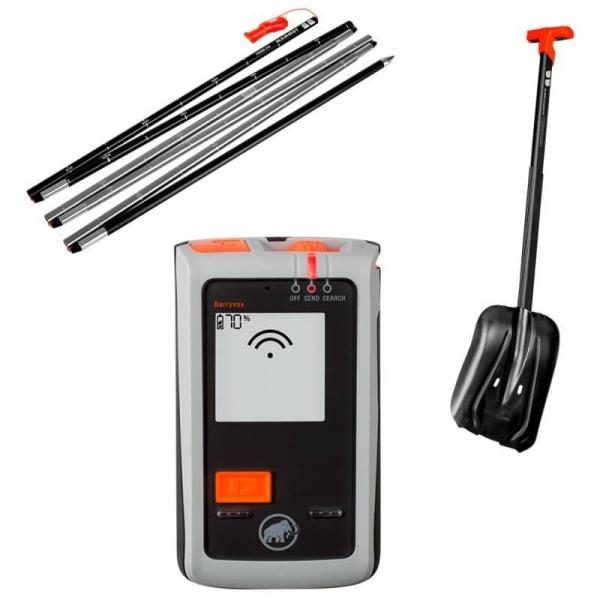
AIRBAG BACKPACK: WHAT IS IT?
It is simply a bag that will increase your body volume by inflating itself. It is with the help of a CO2 cartridge which, once you have hit it by operating the handle, will inflate on the sides of your backpack and therefore keep you on the surface of the avalanche, giving you a better lift. This equipment is complementary to the safety pack.
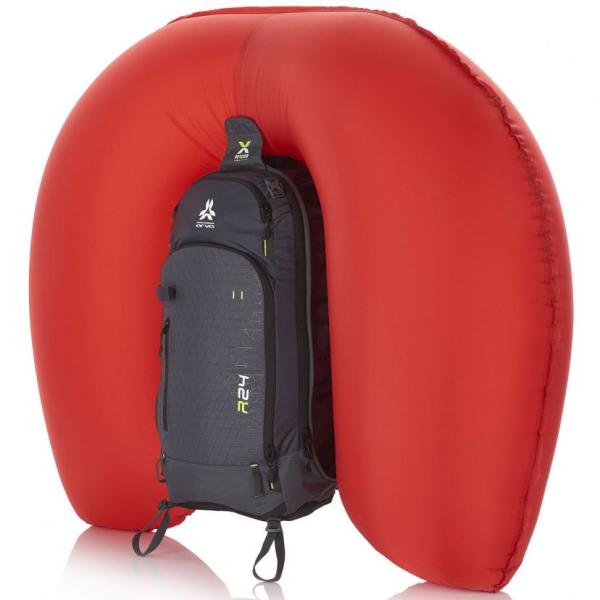
In the field, several key movements are necessary to avoid bad choices. For this we can rely on the experience of our national “guidos”

Short List
- The right gestures to adopt
- AVD check at the beginning
Check for each member of the group that the transmit and receive mode is working. To find out how to do this you can read our blog Tuto Intermediate - Advanced, Check AVD
- Spare skins
- Know the helicopter signs
- A pair of crampons
- Do not go alone, and prevent some family or friends where you are going and the route.
- In case of rescue, being able to quickly find the GPS details on your smartphone.
- Have inside your backpack something to cover yourself, survival blanket, food, hot drink, headlamp, first aid kit, strap…
That's it! We are coming to the end of this blog!
Thank you for your attention, we hope you have learned or updated some concepts.
If you have any further questions, please do not hesitate to contact us or come and visit us at the Shop!
RIDE SAFE !
